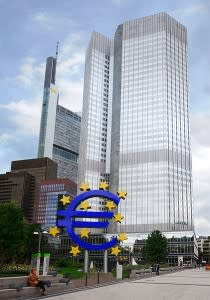Eurozone GDP Turns Positive: Time To Buy?
Over the past few years, the world economy has undeniably struggled against significant headwinds after the unprecedented financial crisis rocked the markets in 2008. But while the U.S. has seemingly stayed on track to economic recovery, the eurozone has struggled to overcome its debt burdens. Until recently, most investors have remained understandably bearish on the currency block, but recent data has shown some glimmers of hope in the eurozone’s ability to bounce back [see Single Country ETFs: Everything Investors Need To Know].
Last week, the eurozone’s seemingly never-ending recession was brought to close after Eurostat reported that the economy grew at an annualized 1.1% rate in the second quarter – the first positive reading after 18 months of contraction. Despite the positive data, investors are still quite leery of whether or not the currency block will be able to fix its currency flaws and overwhelming debt burdens.
Eurozone GDP Turns Positive
In the second quarter, Euroozone Flash GDP was reported at 0.3% (quarterly rate), a significant turnaround from the previous -0.20% recording. Since the fourth quarter of 2011, the economy has contracted between 0.10% and 0.60% each quarter. While these declines are by no means as large as ones seen in 2009, investors and analysts alike have become skeptical of positive growth data, because in 2010 the economy seemed to be recouping at least some of its losses [see 3-Year Review: Best & Worst ETFs Across The Globe].
Many economists have also noted that the latest positive reading is yet another sign of how the eurozone’s recovery is still too sluggish to overcome the currency bloc’s deeper issues, such as rising debt piles, mass unemployment, struggling banks and political instability. Others point out that the uptick in GDP was primarily due to solid performances in both Germany and France – two countries that have over the years managed to stave off the worst of the recession.
A Closer Look At The Currency Bloc
While the eurozone as a whole has struggled to stay out of the red, a closer look at the bloc’s components shows a clearer picture of the local economies and equity markets. Below, we highlight the annual and year-to-date returns of several country-specific Europe ETFs and compare them to the more broad-based FTSE Europe ETF (VGK, A+):
MSCI France ETF (EWQ, B)
MSCI Spain Capped ETF (EWP, B)
MSCI Austria Capped ETF (EWO, C+)
MSCI Netherlands Investable Market ETF (EWN, B+)
MSCI Belgium Capped ETF (EWK, B-)
MSCI Italy Capped ETF (EWI, C+)
MSCI Germany ETF (EWG, A)
Back in 2009, Austria’s stellar performance pushed EWO to the top, with the fund gaining nearly 60% during the year. Fast-forward to 2011, however, and EWO was the worst performer, shedding more than 30%. Over the last year and half, the Belgium, Germany and France ETFs have performed quite well given the circumstances. The broad-based VGK has also fared well, but investors should note that the fund is heavily biased toward the “safer” eurozone countries, as well as economies outside of the currency bloc [see Euro Free Europe Portfolio].
The Bottom Line
Despite recent positive economic data, investors should still remain cautious before choosing to add exposure to the eurozone economy, as it will likely take several more years for the currency bloc to get back on track. In the mean time, certain economies within the bloc have shown promising signs over the last year and half and certainly warrant a closer look from investors.
Follow me on Twitter @DPylypczak.
Disclosure: No positions at time of writing.
Click here to read the original article on ETFdb.com.
Related Posts:


